*Saludos amigos de esta comunidad amantes del café*

Mi hija menor, que emigró a Argentina y vive en Buenos Aires, comenzó a trabajar en una cafetería que queda en el Barrio Chino en Belgrano y se llama Cafetería 2D. Allí comenzó sirviendo las mesas y ahora es la barista de la cafetería.
Esta cafetería tiene una decoración muy bonita en las paredes que asemejan un mobiliario, pintado en blanco y negro.

Ella fue aprendiendo paso a paso a manejar la máquina, a calibrarla, el arte de preparar un buen café y hacer las figuras con la espuma de la leche que adornan la taza de café. El anterior barista la fue enseñando porque veía el interés de ella en aprender.
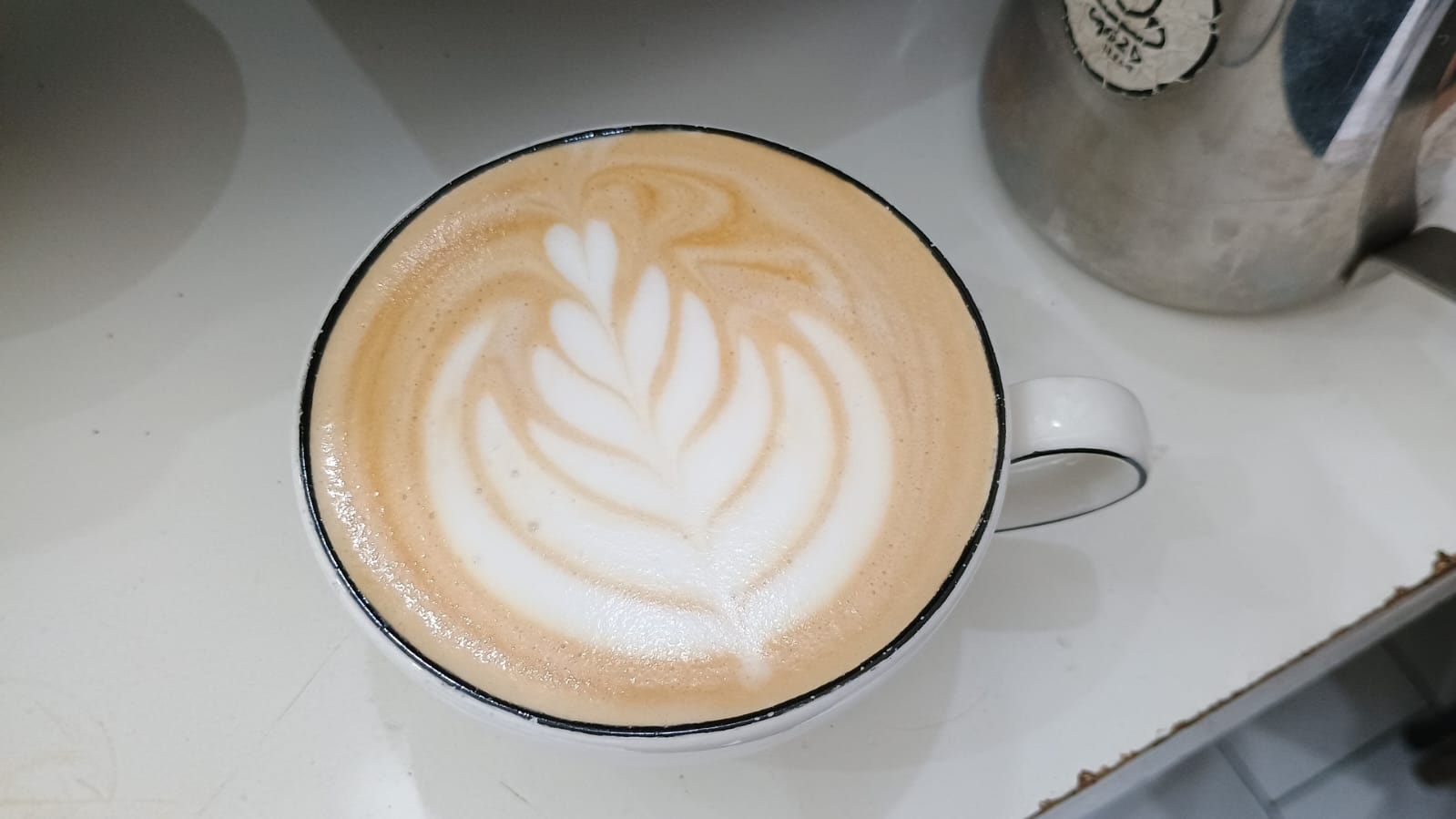
***
En mi casa hay una máquina pequeña de hacer café, pero yo estoy acostumbrada a prepararlo utilizando la bolsa de colar, pero quería aprender y con las medidas que usé de café y agua que estan marcadas tanto en el porta filtro como en el vaso, me quedaba fuerte y muy amargo.
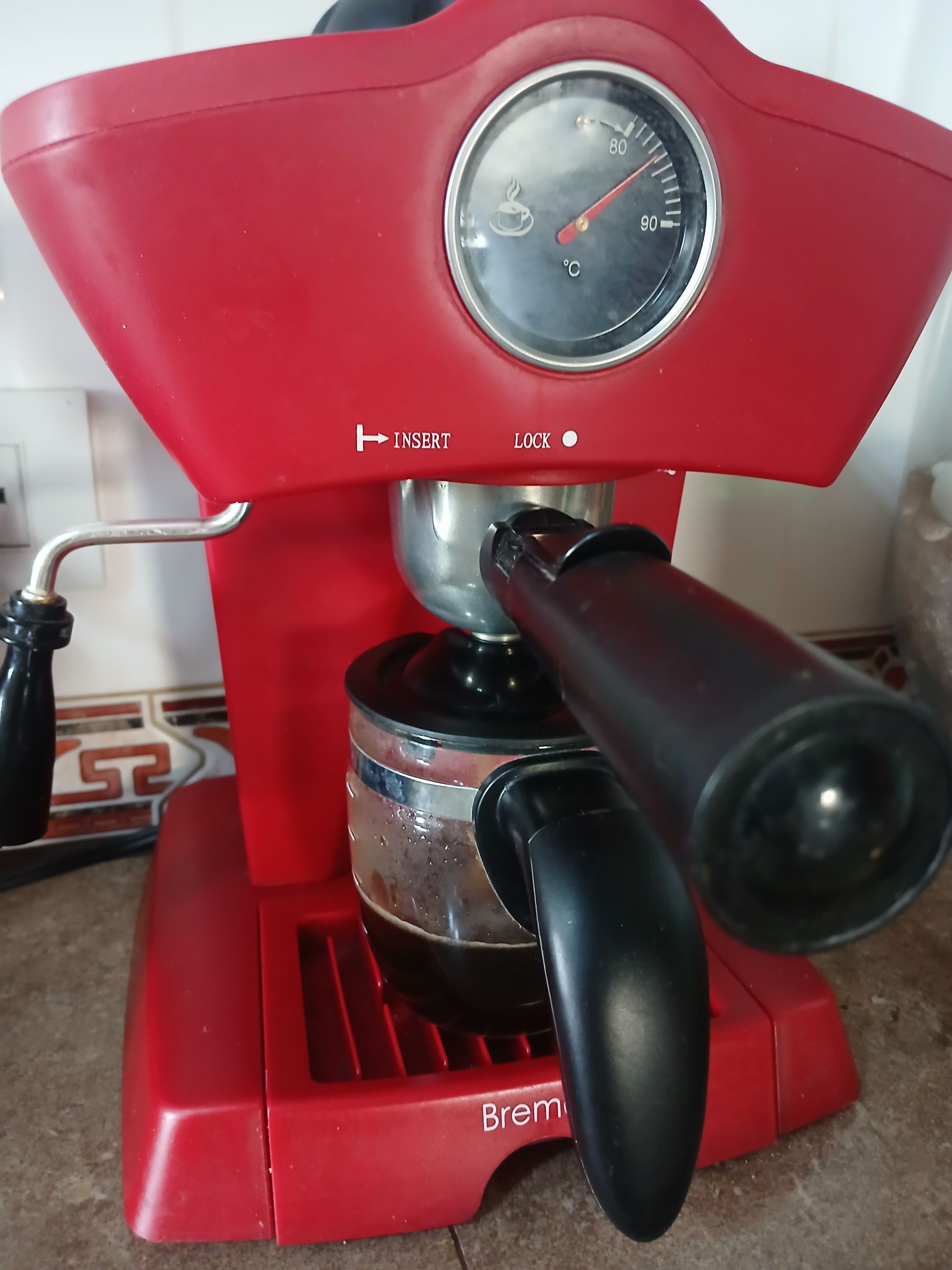
***
Consulté con mi hija el por qué de esto, lo que no ocurre cuando se cuela en bolsa. Ella me explicó que cuando se pone el café molido dentro del portafiltro, este debe quedar bien presionado para eliminar el aire y para que el agua fluya lentamente y pueda extraer el sabor del café y para eso es que usa el tamper que es una herramienta manual. A este café ya presionado se le llama pastilla. Yo no tenía ni idea de que este artefacto tuviera esa función.
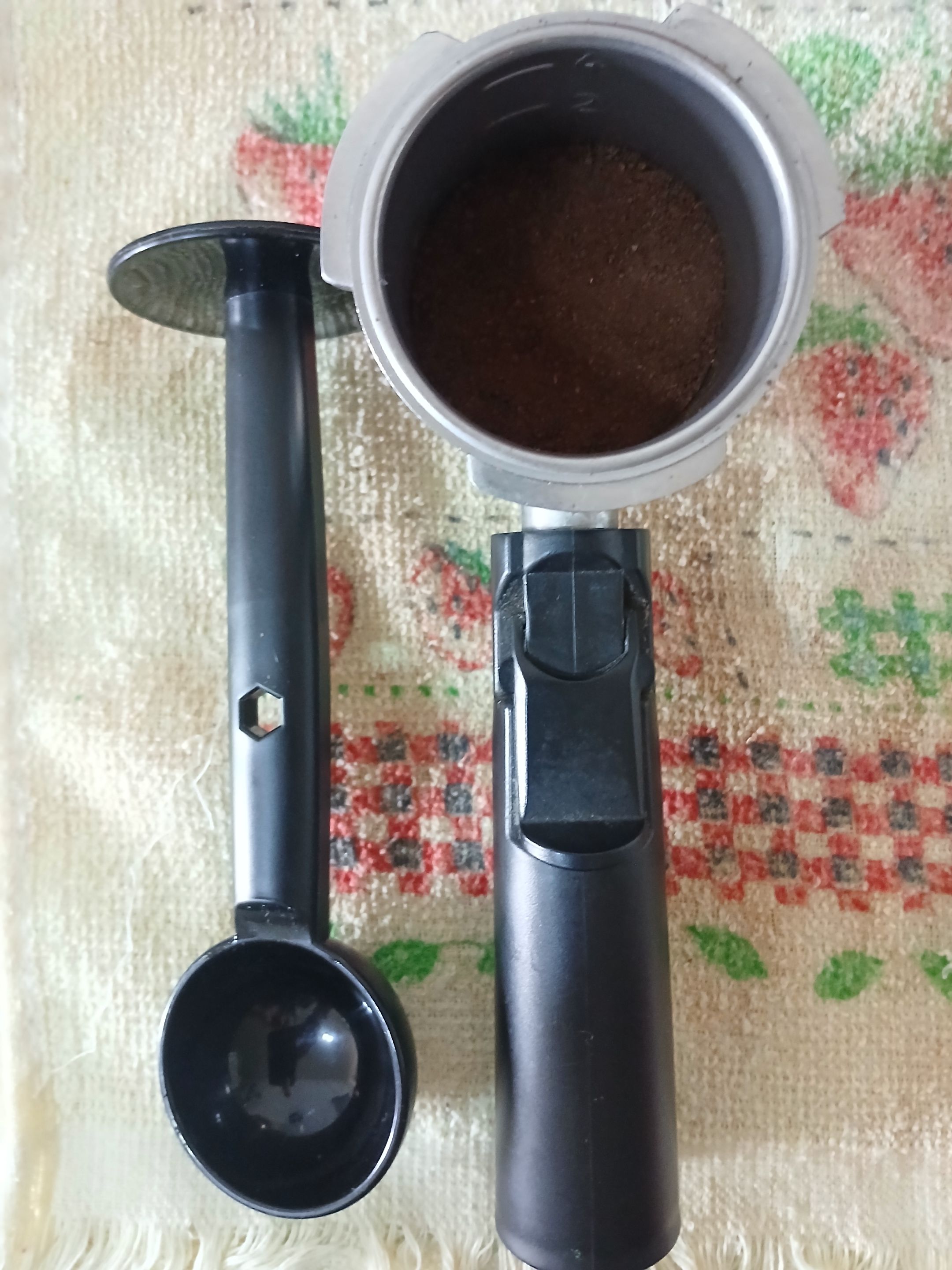
Este es el tamper y el porta filtro de mi cafetera.

Aqui ella me explica como se usa el tamper. Ahora el café me queda mucho mejor y además me rinde mucho más.
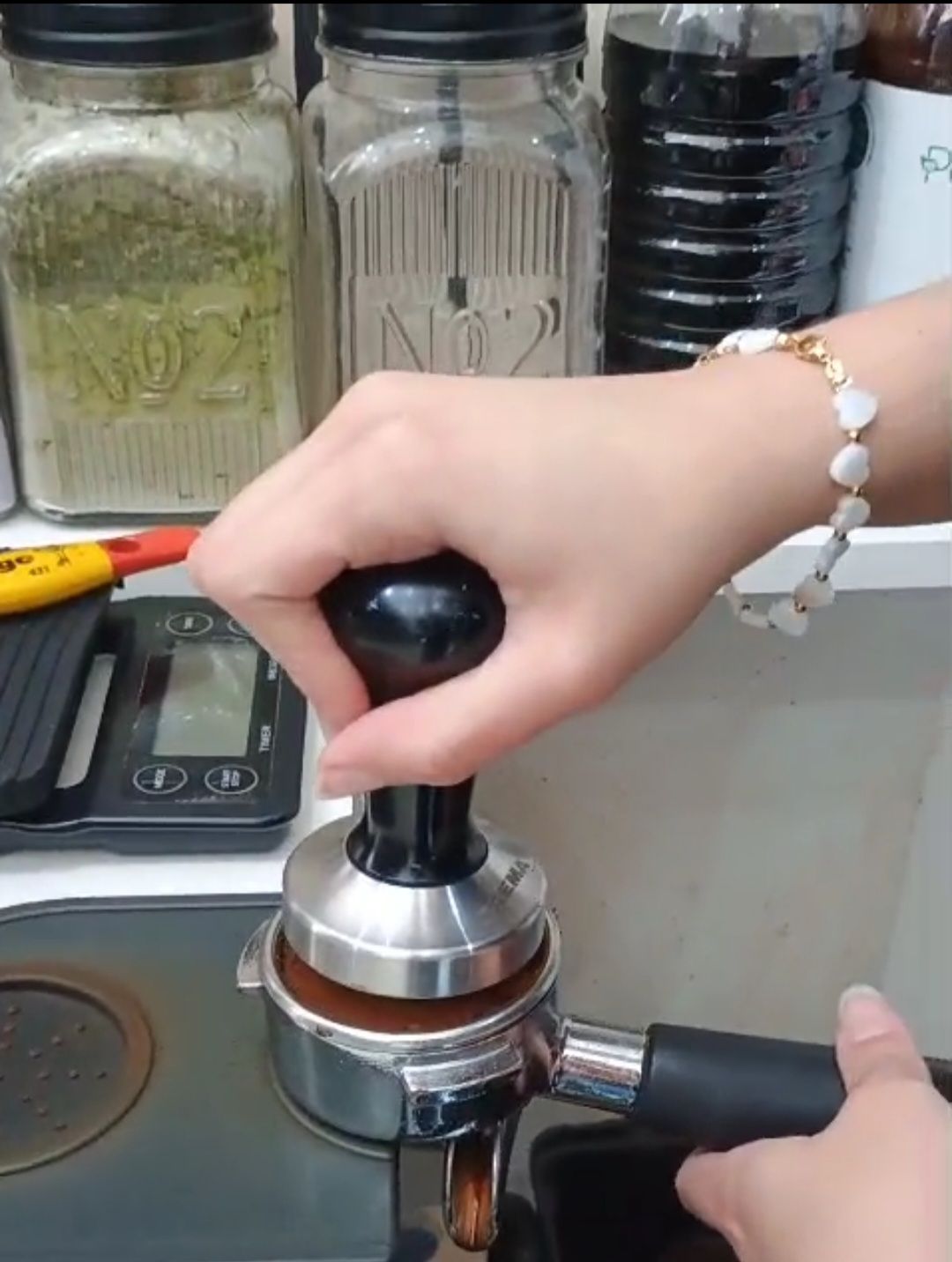
***
Acá en Venezuela le decimos café negro o tinto al café fuerte que no lleva leche y si es suave le decimos guarapo.
Ella me explicó que cuando tiene que preparar un café tinto, que allá le dicen americano, lo prepara con dos espressos y agua caliente. El espresso es el café que sale de la máquina que se ha calibrado para un peso determinado y un volumen de agua y que esto depende del tipo de café. Para preparar un expreso serían sproximadamente 8 g en 20 ml de agua. Ella hace dos espresoss al mismo tiempo (aprox 18 gr de café).
El tiempo estimado para la salida del café a una temperatura de 125°C y una presión determinada , se calcula que debe ser el doble de la cantidad de café, es decir si son 18 g el tiempo son 36 segundos. Todos estos factores se calibran en la máquina y son ademas de otros factores relaciónados con la calidad del café los que determinan su sabor y aroma.
***
Al café con leche, le dicen latte y lo prepara con un espresdo y leche. Y con la espuma hace la forma cuando se agrega a la taza.
Y el flat white vendría siendo lo que acá llamamos marrón. Y lo prepara más intenso y con menos leche.
Al café con más leche que café, acá le decimos "tetero" y en Buenos Aires le dicen "lágrima". Es gracioso cómo las personas asocian estos nombres con el café.

Algunas formas que ella hace con la leche espumosa. Es una habilidad que se aprende con la práctica. Y además es un arte que adorna la taza de café.
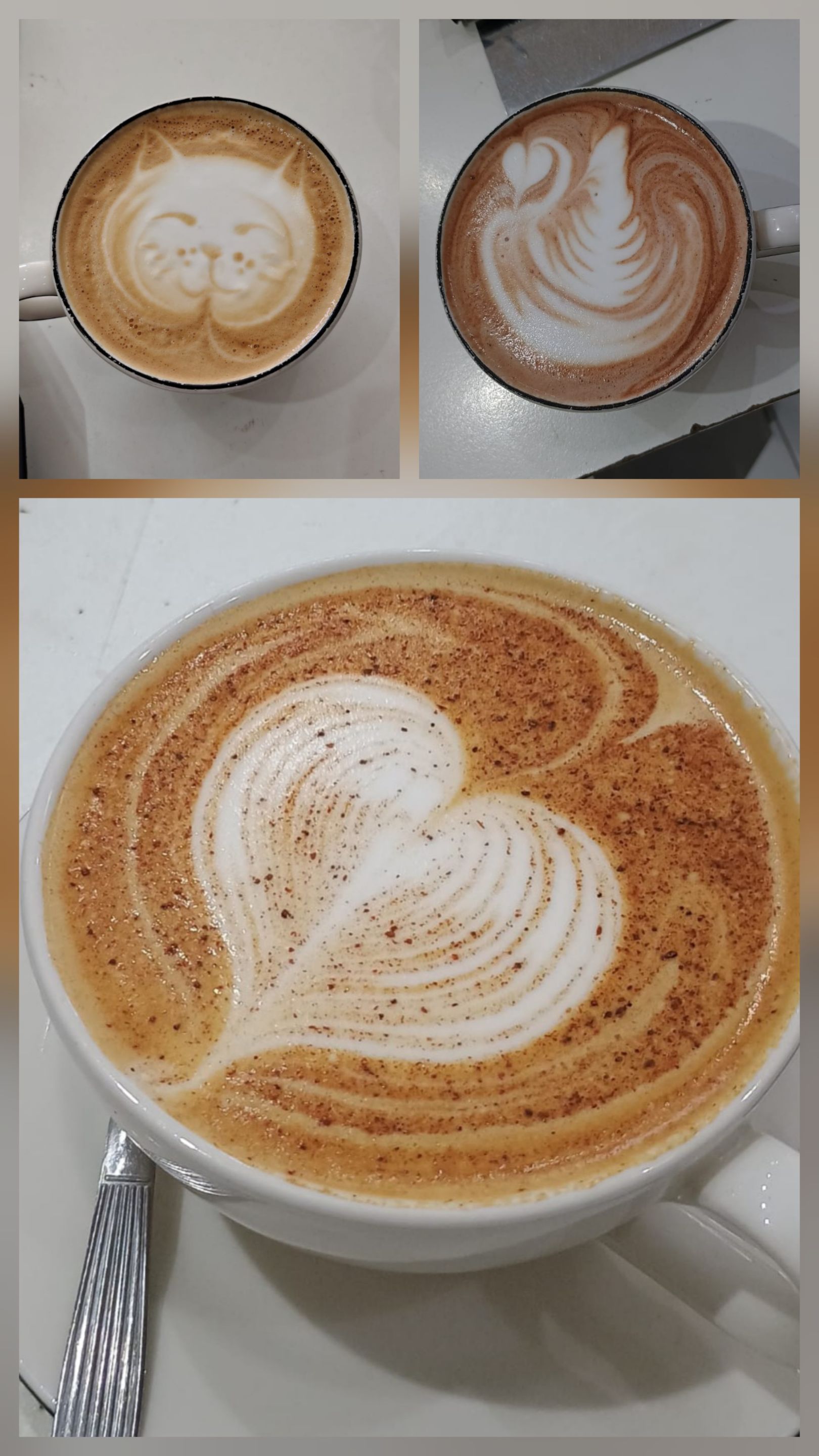
Muchas gracias por leer
***

***
Hello friends of this community of coffee lovers
My youngest daughter, who emigrated to Argentina and lives in Buenos Aires, got a job in a coffee shop in Chinatown called Cafeteria 2D in Belgrano. She started there waiting tables and now she is the barista of the cafeteria.
This cafeteria has a very nice decoration on the walls that resemble furniture, painted in black and white.

She learned step by step how to operate the machine, calibrate it, the art of preparing a good coffee and make the figures with the milk foam that decorate the cup of coffee. The previous barista was teaching her because he saw her interest in learning.

***
In my house there is a small machine to make coffee, but I am used to prepare it using the brewing bag, but I wanted to learn and with the measures I used of coffee and water that are marked both in the filter holder and in the glass, it was strong and very bitter.

I asked my daughter why this was the case, which does not happen when brewing in a bag or making coffee in the grecca. She explained to me that when the ground coffee is placed inside the filter, it must be well pressed to eliminate the air and so that the water flows slowly and can extract the flavor of the coffee and that is why she uses the tander. This already pressed coffee is called pastilla. I had no idea that this device had this function.

This is the tamper and the filter holder of my coffee maker.
Here she explains what the tamper is used for. Now my coffee is much better and it also gives me much more yield.

***
Here in Venezuela we call black or red coffee to strong coffee without milk and if it is mild we call it guarapo.
My daughter explained to me that when she has to prepare a red coffee, which they call American, she prepares it with two espressos and hot water. The espresso is the coffee that comes out of the machine that has been calibrated for a certain weight and volume of water and that this depends on the type of coffee. To prepare an espresso it would be approximately 8 g in 20 ml of water. She makes two espressos at the same time (approx. 18 gr of coffee).

The estimated time for the coffee to come out at a temperature of 125°C and a determined pressure is calculated to be double the amount of coffee, that is to say, 36 seconds. All these factors are calibrated in the machine and are in addition to other factors related to the quality of the coffee that determine its flavor and aroma.
The coffe with milk is called latte and is prepared with espresso and milk. And with the frothed milk it makes the shape when it is added to the cup.
And the flat would be what we call "brown" here. And he prepares it more intense and with less milk.
To coffee with more milk than coffee, here we call it "tetero" and in Buenos Aires they call it "lágrima". It is funny how people associate these names with coffee.

Some shapes she makes with frothy milk. It is a skill that is learned with practice. And it is also an art that adorns the coffee cup.

***
Thank you so much for reading ☕️
***

La imágen de la presentación la edite en Canva con fotografías propias.
Todas las fotografías fueron tomadas por mi hija y las uso con su autorización y por mi.
La traducción al inglés la realicé en www.deepl.com
Aprendiendo de café con mi hija (Esp/Eng)
@popurri
· 2025-08-11 00:18
· Cinnamon Cup Coffee
#coffee-beverages
#coffeelovers
#coffeeshop
#spanish
#entropia
#creativecoin
#waiv
Payout: 0.000 HBD
Votes: 7
More interactions (upvote, reblog, reply) coming soon.